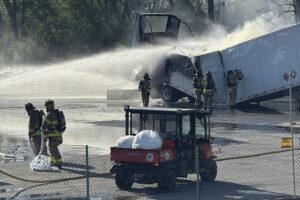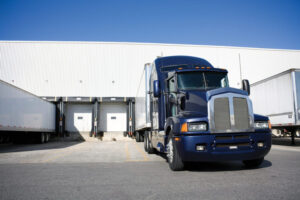WASHINGTON — If you are driving in the San Francisco/Oakland area, you stand a pretty good chance of driving (or riding) on some pretty sorry roads.
So says the a report issued Wednesday by TRIP, a national transportation group.
Among urban areas with a population of 500,000 or more, 71 percent of the total miles of major roads in the San Francisco/Oakland area are considered to be in poor condition.
To make matters more daunting for California motorists, the worst three locations among large urban areas are in the Golden State, with 64 percent in San José, and 57 percent in the Los Angeles/Long Beach/Anaheim area.
In the mid-sized urban areas with populations of 200,000-500,000, three of the top four cities are in California — Antioch at 57 percent; Concord at 56 percent and Oxnard at 48 percent.
Madison, Wisconsin, is No. 3 in mid-size urban areas, at 46 percent.
The TRIP report “Bumpy Roads Ahead: America’s Roughest Rides and Strategies to make our Roads Smoother,” evaluates pavement conditions in the large and mid-sized (200,000-500,000 population) urban areas and calculates the additional costs passed on to motorists as a result of driving on rough roads.
Driving on deteriorated urban roads costs motorists as much as $1,049 annually, the TRIP report said, because driving on roads in disrepair increases consumer costs by increasing needed repairs, maintenance, fuel consumption, tire wear, and accelerating vehicle deterioration and depreciation.
The remaining seven cities in large urban areas in the report with a poor share of bad roads are:
- Milwaukee, 54 percent
- Honolulu, 54 percent
- Akron, Ohio, 49 percent
- Cleveland, 49 percent
- New York-Newark, 46 percent
- Providence, Rhode Island/Massachusetts, 46 percent
- Philadelphia/New Jersey/Delaware/Maryland, 43 percent
The remaining six cities in mid-size urban areas are:
- Round Lake Beach-McHenry-Grayson Lake, Illinois/Wisconsin, 44 percent
- Jackson, Mississippi, 44 percent
- Santa Rosa, California, 43 percent
- Green Bay, Wisconsin, 43 percent
- Stockton, California, 43 percent
- Victorville-Hesperia, California, 42 percent
In 2016, one-third of the nation’s major urban roads – interstates, freeways and other arterial routes – had pavements that were in substandard condition and provided an unacceptably rough ride to motorists, costing the average driver $599 annually. The nationwide annual cost to motorists driving on deteriorated roads totals $130 billion.
“Drivers are paying a hefty price for our nation’s crumbling roads and bridges,” said Kathleen Bower, AAA senior vice president of public affairs and international relations.
“Those traveling daily through urban cities bear the weight of the problem — with many wasting thousands of dollars each year on rising transportation costs due to pot holes and wasted fuel. “AAA urges Congress and the current administration to prioritize transportation infrastructure improvements to ensure safe, efficient and reliable mobility across the United States.”
Road conditions could deteriorate further as the rate of vehicle travel continues to increase and local and state governments find themselves unable to adequately fund road repairs, the TRIP report said.
With vehicle travel growth rates returning to pre-recession levels and large truck travel anticipated to grow significantly, mounting wear-and-tear on the nation’s urban roads and highways is expected to increase the cost of needed highway repairs. Vehicle miles of travel in the U.S. increased by 16 percent from 2000 to 2016 and increased by 6 percent in just the three years from 2013 to 2016. Travel by large commercial trucks in the U.S. increased by 29 percent from 2000 to 2016 and is anticipated to increase by approximately 56 percent from 2018 to 2045, putting even greater stress on the nation’s roadways.
“The needs of our nation’s infrastructure continue to grow. This report provides clear evidence that deteriorating roads are a strain on motorists and bad for the economy,” said U.S. Chamber of Commerce Vice President of Transportation and Infrastructure Ed Mortimer. “It is past time for federal lawmakers to come together to enact a long-term infrastructure modernization plan.”
The U.S. Department of Transportation’s semi-annual report on the condition, use and funding needs of the nation’s surface transportation program found that the current backlog of needed road and highway rehabilitation is $419.5 billion and that the nation’s current $41 billion annual investment in maintaining the condition of roads and highways should be increased by 33 percent to $61 billion annually to improve the condition of America’s roads and highways.
“Motorists are facing a rough ride in many urban areas because of a lack of adequate funding for road repairs,” said Will Wilkins, TRIP’s executive director. “Some states and regional governments have begun to address their needs through recent funding increases, but it will also take action by the federal government. Congress can help by fixing the federal Highway Trust Fund with a sustainable source of user-fee based revenue.”
The Trucker News Staff produces engaging content for not only TheTrucker.com, but also The Trucker Newspaper, which has been serving the trucking industry for more than 30 years. With a focus on drivers, the Trucker News Staff aims to provide relevant, objective content pertaining to the trucking segment of the transportation industry. The Trucker News Staff is based in Little Rock, Arkansas.







